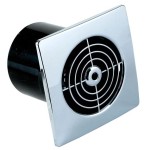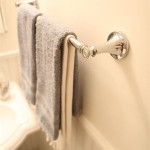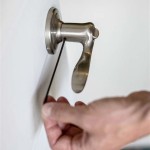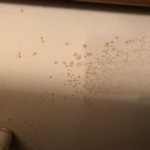The article must be original and must not have been written before.
How To Replace A Bathroom Exhaust Fan Light Combo
Replacing a bathroom exhaust fan light combo is a common home improvement task that can improve ventilation, lighting, and potentially even reduce moisture-related issues like mold growth. While it may seem daunting, the process is manageable for most homeowners with a basic understanding of electrical work and some common tools. Safety is paramount when dealing with electrical components, so meticulous attention to detail and adherence to safety guidelines are crucial.
This article provides a comprehensive guide on how to safely and effectively replace a bathroom exhaust fan light combo. It covers essential preliminary steps, the removal of the old unit, the installation of the new unit, and important post-installation checks. Following these instructions carefully will help ensure a successful and safe replacement.
Key Point 1: Preparation and Safety Precautions
Before starting any electrical work, meticulous preparation is essential. This phase involves gathering the necessary tools and materials, turning off the power supply to the bathroom circuit, and ensuring the work area is safe and well-lit. Failure to adequately prepare can lead to accidents, prolonged work time, and compromised results.
The first and most crucial step is to
turn off the power
to the bathroom circuit at the electrical panel (breaker box). Locate the breaker that corresponds to the bathroom and switch it to the "off" position. To confirm the power is off, test the existing exhaust fan light combo using a non-contact voltage tester. Hold the tester near the wires and light fixture; if the tester indicates voltage, the power is still on. Double-check the correct breaker is off before proceeding.Next, gather the necessary
tools and materials
: * New bathroom exhaust fan light combo (ensure it fits the existing opening or be prepared to modify the opening) * Screwdrivers (Phillips and flathead) * Wire strippers/crimpers * Wire connectors (wire nuts) * Non-contact voltage tester * Pliers * Utility knife * Safety glasses * Work gloves * Ladder or step stool * Dust mask * Measuring tape * Pencil * Drill/driver (optional, for modifying the opening) * Caulk or sealant (optional, for sealing gaps)Read the
manufacturer's instructions
for the new exhaust fan light combo thoroughly. Different models have different installation requirements, and understanding these instructions beforehand will streamline the process. Pay close attention to any warnings or specific safety recommendations provided by the manufacturer.Finally, prepare the work area. Cover the floor beneath the exhaust fan with a drop cloth to protect it from debris. Ensure adequate lighting so it is easy to see the wiring and components. Wear safety glasses and a dust mask to protect your eyes and respiratory system from falling dust and insulation. Having a clear and well-organized workspace will greatly facilitate the replacement process.
Key Point 2: Removing the Old Exhaust Fan Light Combo
Once the power is off and the work area is prepared, the next step is to carefully remove the old exhaust fan light combo. This involves detaching the cover, disconnecting the wiring, and then removing the fan housing from the ceiling. Patience and careful observation are key to prevent damage to the surrounding ceiling and wiring.
Begin by removing the
cover
of the existing exhaust fan light combo. Most covers are held in place by spring clips or screws. Gently pull down on the cover while looking for spring clips that need to be disengaged. If screws are present, use the appropriate screwdriver to remove them. Once the cover is detached, set it aside.Next, carefully
disconnect the wiring
. Before disconnecting any wires, take a picture of the wiring configuration as a reference for reconnecting the wires to the new unit. This is a critical step to ensure the new unit is wired correctly. Use the non-contact voltage tester to confirm the power is still off before touching any wires. Loosen the wire connectors (wire nuts) and carefully detach the wires, keeping them separated. If the wires appear brittle or damaged, consider replacing them with new wire of the same gauge.With the wiring disconnected, it is time to
remove the fan housing
from the ceiling. Most exhaust fan housings are attached to the ceiling joists with screws or mounting brackets. Locate the screws or brackets and remove them. If the housing is caulked to the ceiling, use a utility knife to carefully cut through the caulk line. Be prepared to support the housing as you remove the last screws or brackets to prevent it from falling.Once the housing is free, carefully lower it from the ceiling. Be mindful of any remaining wires or ductwork that may be attached. If ductwork is connected, disconnect it from the fan housing. Clean the area around the opening to remove any dust, debris, or old caulk.
Key Point 3: Installing the New Exhaust Fan Light Combo
With the old unit removed, the final step is to install the new exhaust fan light combo. This involves fitting the new housing into the opening, connecting the wiring, attaching the ductwork, and securing the cover. Proper installation ensures the fan operates efficiently and safely.
First,
prepare the opening
for the new housing. Compare the size of the new housing to the existing opening. If the opening is too small, carefully enlarge it using a drywall saw. If the opening is too large, you may need to add shims to create a snug fit. Ensure the opening is clean and free of any obstructions.Next,
install the new housing
. Carefully lift the new housing into the opening and secure it to the ceiling joists using screws or mounting brackets. Ensure the housing is level and securely attached. If the housing has a damper, make sure it operates freely. Connect the ductwork to the new fan housing. Secure the connection with foil tape or clamps to prevent air leaks. If the existing ductwork is damaged or inefficient, consider replacing it with new insulated ductwork.Then
connect the wiring
. Refer to the picture taken earlier or the wiring diagram provided with the new unit. Connect the wires using wire connectors (wire nuts), matching the colors (black to black, white to white, and green or bare copper to ground). Ensure the connections are secure and that no bare wire is exposed. Tuck the wires neatly into the wiring compartment of the fan housing.Once the wiring is connected,
install the light bulb(s)
in the new unit. Use the correct wattage bulbs as specified by the manufacturer. Finally,attach the cover
. Align the cover with the housing and secure it with spring clips or screws, depending on the model. Ensure the cover is securely attached and that there are no gaps.After completing the installation, turn the power to the bathroom circuit back on at the breaker box. Test the exhaust fan and light to ensure they are functioning properly. If the fan does not operate or the light does not turn on, double-check the wiring connections and the circuit breaker.
Inspect the installation for any gaps between the fan housing and the ceiling. If gaps are present, seal them with caulk or sealant to prevent air leaks. This will improve the efficiency of the fan and prevent moisture from entering the attic or ceiling space.
Replacing a bathroom exhaust fan light combo is a straightforward task with careful preparation and execution. By following these steps and prioritizing safety, homeowners can successfully upgrade their bathroom's ventilation and lighting.


Broan Nutone Bath Fan Model 765h80l Disassembly Repair Help

Bathroom Exhaust Fan With Humidity Sensor On One Switch Home Improvement Stack Exchange

Replace Shower Light With Fan Combo Doityourself Com Community Forums

Should I Install A Bathroom Heater Fan Light Combo

How To Add Exhaust Fan Heater Light Fixture Combination

Wiring Bathroom Exhaust Fan Light With Two Switches Doityourself Com Community Forums

Update An Existing Bathroom Exhaust Fan Cover Remodelaholic

How To Install A Bathroom Fan With Bluetooth Speakers Fixthisbuildthat

How To Replace A Bathroom Exhaust Fan Without Attic Access 12 Step Guide Home Inspector Secrets
Related Posts







